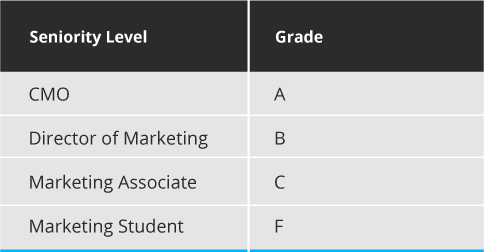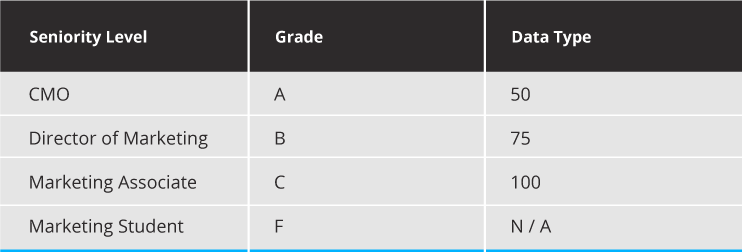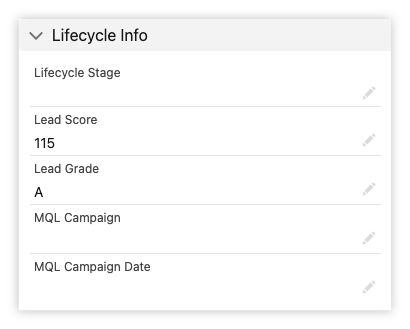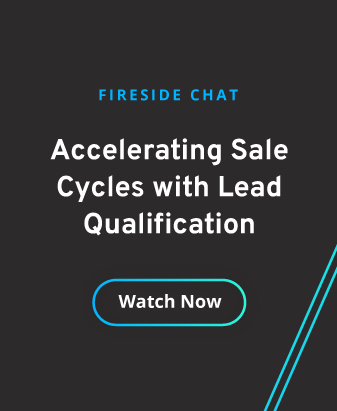Marketing is frustrated with sales when leads are not followed up on. While sales is pointing the finger at marketing saying that “the leads are weak.” The problem? The two have not aligned to define their lead qualification process.
In HubSpot’s Not Another State of Marketing Report, only 5% of salespeople said that the leads they receive from marketing were very high quality–ouch! When marketing is able to send a better quality lead over to sales this results in faster sales cycles, higher win rates, and more revenue for the business.
As a critical process to align marketing and sales and scale the business, I decided to get the insights and best practices on lead qualification from the Founder & CEO of SaaScend, Craig Jordan, on a fireside chat.
Lead Qualification Fireside Chat Main Takeaways
❶ Why is lead qualification important?
The point of a lead qualification process is to act as a gatekeeper, think of it as the system that is disqualifying buyers that are not a good fit for your business. Having this in place will help to avoid the sales team wasting their time on conversations that will never lead to a deal.
❷ What is the first step of building the lead qualification process?
Marketing and sales need to have a conversation about what their ideal marketing qualified lead looks like. Ask sales the following questions:
-
-
- What are the questions that you are asking prospects to qualify them?
- What are the attributes you are looking for to see if they are a good fit?
-
❸ How should a prospect’s level of engagement contribute to the lead qualification process?
Using the combination of the buyer profile and the activity engagement score, establish an MQL threshold for each level of buyer. Your marketing automation system may use a grade feature to differentiate the buyer profile criteria from the lead score, or you can create automation with your CRM to assign a grade or a value based on the profile of the buyer.
For example, if your ideal buyer is a CMO of a B2B SaaS company that is based in North America, from a seniority perspective, your grading structure may look something like the example in Figure 1.

Figure 1 – An example of using a lead grading system to rate the demographic attributes of a prospect based on their level of seniority within the business.
The more qualified a prospect is based on their demographic and firmographic data, the less of an engagement activity score threshold they should have to reach in order to talk to sales (fig 2).

Figure 2 – An example of Marketing Qualified Lead activity score thresholds as they correspond to the grade assigned to the lead based on seniority.
Notice how in Figure 2, the Marketing Student with a Lead Grade of F, does not have an MQL Activity Score Threshold assigned to it. That is because marketing should have mechanisms in place to never send over leads with an F grade over to sales, regardless of how much they have engaged with their content.

❹ What other considerations should there be when determining the process to send qualified leads over to sales?
There are two types of leads that come in through marketing, hand-raisers and nurture leads. Hand-raise leads are the ones that fill out your request a demo form, or submit to your contact us page. They are actively raising their hand expressing that they want to talk with someone. Nurture leads are prospects that engage with enough marketing campaigns to reach that designated threshold of engagement criteria in conjunction with the demographic and firmographic data, to be sent over to sales.
A hand-raise lead should have less barrier to entry for being sent over to sales, but if the person wants to talk to sales and they match nothing in regards to your ideal buyer profile, then instead of passing them over to sales, marketing can have content ready to send them, relevant to what they are inquiring about.
❺ What are your best practices regarding lead scoring?
Not all prospect engagement activity should be scored equally. A prospect clicking on a link on a social media post should not be scored the same as registering for a webinar. Submitting to your form to download your eBook, should not be scored the same as submitting to your form to schedule a demo.
Use custom scoring within your marketing automation system to weigh the activities that signify the prospect moving further down the funnel, such as submitting to your “schedule a demo” form. This will help these prospects that are more ready to talk to sales and reach your MQL threshold faster, to then be handed off to sales quicker.
Lead Qualification Biggest Mistake to Avoid
Only qualifying leads based on their level of engagement. – Most marketing teams are probably not making this mistake as they may have mechanisms in place to rate leads based on their demographic and firmographic data as well, however, the problem they often encounter is that they deal with a collective one-score rating system.

This is not as helpful for sales when they are considering which leads to prioritize for follow up. The obvious answer is to follow up with their hand-raise leads first, but, if they have two hand-raise leads that come over within a few minutes of each other with the same high score, but one is at the C-Suite level and one is at the management level, it will take them more time to click into each record and look at their buyer profile before following up, than if there was a different rating for this, separate from their activity score, that could quickly summarize the buyer profile attributes.
Whether it is a native functionality within your marketing automation system or automation that is configured in the CRM to create a separate rating, decide on a process of how your team will rate leads based on their demographic and firmographic data to stand out from their level of engagement.
Fireside Chat in a Nutshell
-
-
- Marketing and sales need to align on the criteria for what is considered to be an MQL, or the two departments will continue to be frustrated and the funnel will continue to be slowed.
- Be sure to use a combination of demographic and firmographic criteria and the prospect’s level of engagement to qualify leads.
- Analyze the prospect engagement actions that should be weighed more for scoring, to differentiate your hand-raise leads from your nurture leads, and use this to frame out your custom scoring model.
-
Access the fireside chat on demand to listen to the full conversation.

